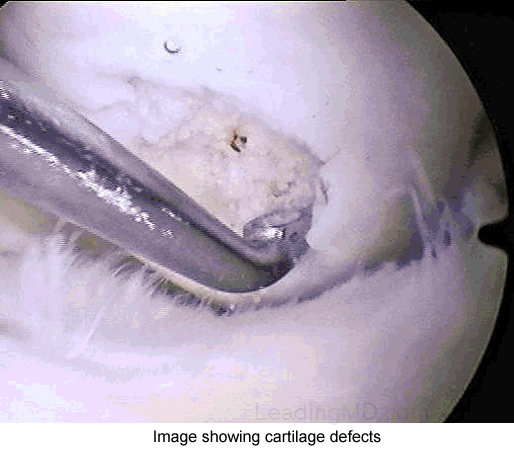Microfracture Technique - Treatment

The Surgical Procedure: Microfracture
The microfracture procedure is done arthroscopically. The surgeon visually assesses the defect and performs the procedure using special instruments that are inserted through three small incisions on the knee. After assessing the cartilage damage, any unstable cartilage is removed from the exposed bone. The surrounding rim of remaining articular cartilage is also checked for loose or marginally attached cartilage. This loose cartilage is also removed so that there is a stable edge of cartilage surrounding the defect. The process of thoroughly cleaning and preparing the defect is essential for optimum results.
Multiple holes, or microfractures, are then made in the exposed bone about 3 to 4mm apart. Bone marrow cells and blood from the holes combine to form a "super clot" that completely covers the damaged area. This marrow-rich clot is the basis for the new tissue formation. The microfracture technique produces a rough bone surface that the clot adheres to more easily. This clot eventually matures into firm repair tissue that becomes smooth and durable. Since this maturing process is gradual, it usually takes two to six months after the procedure for the patient to experience improvement in the pain and function of the knee. Improvement is likely to continue for about 2 to 3 years.
What types of complications may occur?
Most patients progress through the postoperative period with little or no difficulty. Some patients may develop mild transient pain, most frequently after microfracture has been performed on the patella (kneecap) and trochlear groove (the groove on the femur in which the patella glides during motion). Small changes in the articular surface of this patellofemoral joint may produce a grating or "gritty" sensation, particularly when a patient discontinues use of the knee brace and begins normal weightbearing through a full range of motion. Patients rarely have pain at this time, and this grating sensation typically resolves on its own in a few days or weeks.
Similarly, if a steep perpendicular rim was made in the trochlear groove, patients may notice "catching" or "locking" as the ridge of the patella rides over this area during joint motion. Some patients may even notice these symptoms while using the continuous passive motion machine (CPM), a device that gently moves the joint while the patient is lying down. If this locking sensation is painful, the patient is advised to limit weightbearing and avoid the bothersome joint angle for an additional period. These symptoms usually dissipate within 3 months.
Typically, swelling and joint effusion (fluid in the joint) disappear within 8 weeks after a microfracture procedure. Occasionally, a recurrent effusion develops between 6 and 8 weeks after surgery for a defect on the femur; usually when a patient begins to put weight on the injured leg. This effusion may mimic the preoperative or immediate postoperative effusion, although it is usually painless. It usually resolves within several weeks. Rarely is a second arthroscopy required for recurring effusions.
BackNext